Tantra
LIFE POSITIVE EXPO 2010
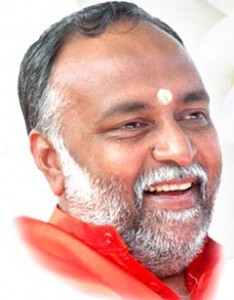
Swami Sukhabodhananda
Founder Chairman of Prasanna Trust
Life Positive is a body- mind-spirit magazine promoting a holistic understanding of the unity of life and self with an emphasis on personal growth. It was started in April 1996 by Aditya Ahluwalia, chairman of the organisation, and Parveen Chopra, founder-editor, under the aegis of Magus Media Pvt Ltd. Produced by a team of professional journalists, some of who are also active seekers, Life Positive covers the beat of spiritual wisdom, techniques, gurus, personal growth therapies, alternative medicine, holistic healers and organisations with insight, accuracy, thoroughness and discrimination.
Site Design & Development:
The site Portal services: email, search engines and discussion boards are provided by third-parties, Everyone.Net and Google.com .
For further details, write: webmaster@lifepositive.net
In June 2005, the group launched its second publication, Life Positive Hindi. Within its short span of existence, the magazine has earned a strong readership base. The group has published a number of books, including Parallel Journeys and Nine Days to Nirvana and organised prestigious music festivals. The magazine is edited today by Suma Varughese who has been with the magazine since its inception and is the former editor of Society magazine.
Life Positive is fortunate to have Mr D.R. Karthikeyan, former chief of the CBI, as President. It also has a panel of eminent names as advisors including . Mark Tully, Kiran Bedi, Devieka Bhojwani, M Madhvan Nambiar, K M S ‚Titoo‘ Ahluwalia, G Venkatesh Rao , and Parveen Chopra.
PREM NIRMAL: TRIPURA RAHASYA RETREAT
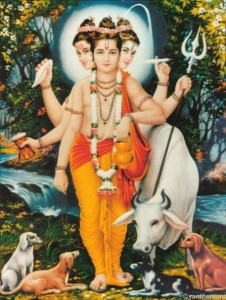
www.sriramanasevaashram.blogspot.com
TRIPURA RAHASYA RETREAT
The Mystery beyond the Trinity
www.premnirmal.com
Tripura Rahasya was considered by Bhagavan Sri Ramana Maharshi as one of the greatest works that expounded advaita philosophy. He often quoted from it and regretted that it was not available in English. As a consequence Sri Munagala Venkataramaiah (now Swami Ramanananda Saraswathi) took up the work of translation in 1936 as another labour of love, adding just one more English translation to his already extensive store. This was first published in parts in the Bangalore Mythic Society’s Journal (Quarterly) from January 1938 to April 1940 and afterwards collected into book form, of which five hundred copies were printed and privately circulated. The Asramam has since taken over the copyright and made it one of their official publications.
Mahavidya in Hinduism, Shaktism: > Here <
DATTATREYA UPANISHAD: > Here <
Tripura Rahasya was considered by Bhagavan > Sri Ramana Maharshi < as one of the greatest works that expounded > Advaita philosophy <. Tripura literally means the three cities. They are the states – Jagrat (waking state) – Svapna (dream state) and Shushupti (deep sleep state). The undercurrent of consciousness in all of them, remaining unaffected, is metaphorically called the Resident Mistress by name of > Sri Tripura < . The procreative faculty generating new beings and the link of altruistic love connecting the offspring to the parent are personified in the Mother; hence the feminine termination of Tripura. „The way to transcendence“ signifies that interest in Tripura purifies the mind and creates the zeal for enquiry into the Truth. As in many of the Great Indian texts, the presentation is that of a dialogue between Master (Dattatreya) and Disciple (Parasurama). The latter conveys his doubts, one after another to His Master who responds patiently with clarity and using as great a variety of explanations as the quantity of doubts thrown at him. Slowly but surely, He destroys his Disciple’s every doubt and misconceptions thus revealing the Truth beyond all states: the Stateless State.
During this retreat we will practice Chakrodaya Dhyan with sandhikal jagrukta, Suprashant Pranayam, Nirmal Kriya with Nirmal Mudra to dive deep in Meditation to explore the unknown and unknowable. Also we will have many insights form Tripura Rahasya to contemplate! Because of the intensive nature of this retreat, no. of participants is limited to a small group. Entry to this camp is on first come first serve basis. Senior citizens having problems of movement will be given rooms on ground floor near conference room.
This retreat is an ideal combination “Dhyan – Gyan – Bhakti” (Meditation – Understanding – Devotion) that will help you to settle your understanding of the process of Enlightenment and Ascension. We will practice various methods of meditation and contemplation to internalize Tripura Rahasya that will help you to sustain enlightenment. Please note that this retreat is only for those who have a strong desire to learn, grow and walk the path to sustained enlightenment. Those who have attended ADP Camp and /or have background of Kashmir Shaivism are most welcome.
Please note that there are no eligibility criteria for this camp. All sincere seekers of truth who are ready to dive deep within and explore the unknown are welcome. Those seekers who had Satori experience or Enlightenment experience in past are welcome to learn further on how to sustain the enlightenment.
This retreat will be personally conducted by Guruji Prem Nirmal. To know more about Guruji explore www.premnirmal.com
To register for this event, ask for the registration form and detailed leaflet by mail to pdnirmal@gmail.com for any further help Call 09769543111
> Meet Ramana Maharshi Groups, Friends, Studies, Fans at facebook <
> Meet Hinduism, Groups, Friends at facebook <
> Meet Kashmir Hinduism, Studies, Friends at facebook <
> Meet Shaktism and Devi the Godess at facebook <
> Meet Saundaryalahari: Wave of Bliss by Shankaracharya at fb <
> Meet Arsha Vidya Gurukulam, Studies, Friends, Fans, at fb <
> Meet Advaita Vedanta,Groups,Friends,Studies, Vivekananda at fb <
> Meet Prem Nirmal and Friends at facebook <
> Meet Sri Ramana Maharshi Seva Ashram at facebook <
PRIME TREATMENTS IN AYURVEDA
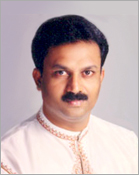
Dr. E. Shaji Raj, www.punarjanis.com
> PRIME TREATMENTS IN AYURVEDA <
Centuries ago, the enlightened masters, in search of spiritual solace, composed the Ayurveda, for the welfare of humanity. According to the scriptures, the human body is made up of 72000 channels connected to the seven spiral energy centers, the diseases of body and mind, which in turn block the path to spiritual enlightenment. The Panchakarma treatment aims at cleansing these channels, pacifying the disease and nourishing the body. It provides longevity, immunity against the disease, whereas in ancient times Yoga, Astrology, Tantra, and Ayurveda were practiced not for longevity but as an ultimate path to enlightenment.
In those ages Ayurveda and self-realisation were cognate and the people held this science in veneration. In the present world it is seen as merely a tool to cure human ailments. More over the practitioners of Ayurveda were Yogis, who would hold the stretched arms of the patients in their hands locate the pulse points and close their eyes as if in a deep trance. Seconds later, they would recount the diagnostic findings one by one. They never had any clinical laboratory or any other technological devices. The innate propensity of certain punarjanis were so splendid that it could work wonders to cure the diseases.
The physician:
Inspired by the findings of the Ayurveda masters we have formulated a system of treatment at ‚Punarjanis‘ bringing the ancient teachings to the limelight in an attempt to serve humanity. We focus on patients with chronic intractable ailments where routine medicine is only palliative.
Dr. E. Shaji Raj, a disciple of Bhramashri Parabattaraka Ananganandanathan Padathirtha, completed his > BAMS < from Madras University. Hailing from a family of traditional Ayurvedic physicians, he has been doing active research in the field of healing for the past 16 years – primarily related to raising energy from the lower center of the body to the higher center. He is one among the few ayurvedic physicians around the world who practice pulse reading and panchakarma treatment.
Incorporating the philosophy and the gist of Ayurveda with the root idea of Tantra and Yoga, the final result is not just cure, but a sea change – a path to enlightenment and bliss. The results have been amazing – an enlightened mind in a sound body.
Adi Shankara:
Adi Shankara (Malayalam:ആദി ശങ്കരന്, DevanÄ�garÄ�: आदि शङ्कर, Ä�di Śaṅkara, pronounced [aːd̪i ɕaŋkərə]); (788 CE – 820 CE), also known as Śaṅkara BhagavatpÄ�dÄ�cÄ�rya and Ä�di ŚaṅkarÄ�cÄ�rya, was an Indian philosopher who consolidated the doctrine of Advaita Vedanta, a sub-school of Vedanta. His teachings are based on the unity of the soul and Brahman, in which Brahman is viewed as without attributes. He hailed from Kalady of present day Kerala.
Shankara travelled across India and other parts of South Asia to propagate his philosophy through discourses and debates with other thinkers. He founded four mathas („monasteries“), which helped in the historical development, revival and spread of Advaita Vedanta. Adi Shankara is believed to be the organizer of the Dashanami monastic order and the founder of the Shanmata tradition of worship.
His works in Sanskrit, all of which are extant today, concern themselves with establishing the doctrine of Advaita (Nondualism). He also established the importance of monastic life as sanctioned in the Upanishads and Brahma Sutra, in a time when the Mimamsa school established strict ritualism and ridiculed monasticism. Shankara relied entirely on the Upanishads for reference concerning Brahman and wrote copious commentaries on the Vedic Canon (Brahma Sutra, Principal Upanishads and Bhagavadgita) in support of his thesis. The main opponent in his work is the Mimamsa school of thought, though he also offers some arguments against the views of some other schools like Samkhya and certain schools of Buddhism that he was familiar with.
Read More here : > HERE <
> Meet all Ayurveda Friends, Groups, Studies at facebook <
> Meet all Buddhism Friends, Groups, Studies at facebook <
> Meet all Hinduism Friends, Groups, Studies at facebook <
> Meet FREE visa to india for MBA , degree Programs, it jobs at fb <
> Meet Vedanta Studies, Friends, Yoga, Int. Society, Groups at fb <
TRADITIONELLE MEDIZIN IN EUROPA
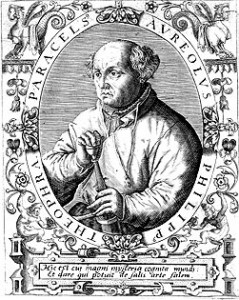
> TRADITIONAL GREEK MEDICINE <
Paracelsus (born Phillip von Hohenheim, 11 November or 17 December 1493 in Einsiedeln, Switzerland – 24 September 1541 in Salzburg, Austria) was a Renaissance physician, botanist, alchemist, astrologer, and general occultist. Born Phillip von Hohenheim, he later took up the name Theophrastus Philippus Aureolus Bombastus von Hohenheim, and still later took the title Paracelsus, meaning „equal to or greater than Celsus“, a Roman encyclopedist, Aulus Cornelius Celsus from the first century known for his tract on medicine.He is also credited for giving zinc its name, calling it zincum and is regarded as the first systematic botanist
GERMAN PHYSICIAN, ALCHEMIST, AND SCIENTIST
1493–1541
Paracelsus was born Theophrastus Bombastus von Hohenheim.
He was a contemporary of Martin Luther and > Nicolaus Copernicus <. He adopted his pseudonym based on his assertion that he was a better physician than Celsus, the first century C.E. Roman author on medicine acclaimed in Renaissance Europe (he was „Para-Celsus,“ or beyond Celsus).
His self-promotion as „The Most Highly Experienced and Illustrious Physician … “ has given us the word „bombastic,“ derived from his birth name.
Paracelsus gained his early medical knowledge from his father, who was a physician. He followed this education with formal medical training at the University of Ferrara in Italy. Finding his formal training disappointing, Paracelsus embarked on a life of travel and study combined with medical practice. According to Paracelsus, he collected medical knowledge anywhere he could find it without regard to academic authority.
He acknowledged his consultations with peasants, barbers, chemists, old women, quacks, and magicians. Paracelsus developed his notions of disease and treatment away from any established medical faculty and promoted the idea that academic medical training had reached a state deeply in need of reform.
Paracelsus believed in the four „Aristotelian“ elements of earth, air, fire, and water. His medical theory was based on the notion that earth is the fundamental element of existence for humans and other living things. Paracelsus believed that earth generated all living things under the rule of three „principles“: salt, sulfur, and mercury. He therefore believed these substances to be very potent as chemical reactants, as poisons, and as medical treatments. Read More about Aristoteles: >HERE <
THE AGAMIC TRADITION AND THE ARTS – (tantrah.)
Mahabhutas in Sangita-Sastra
With Special Reference to Yoga and Ayurveda
Prem Lata Sharma
The five elements have been said here to be the manifestation of Siva, the Supreme Being.
An enquiry into the role of Mahabhutas in Music is essentially a quest for the relationship between the ‚outer‘, ‚inner‘, and what is beyond the two. Roughly, the human organism is the ‚inner‘, whatever is outside the body is the ‚outer‘ and both are closely interrelated.
That which permeates both of them and is yet intangible is beyond them. In understanding the ‚inner‘, both Yoga, and, Ayurveda have made a deep study of the psycho-physical centres in the human body as well as the physiological structure of the body in terms of the Mahabhutas.
The unity of the ‚inner‘ and the ‚outer‘ has been established by expounding that the sense-organs, their objects and their functions are all manifestations of the Mah¡bh£tas. The following passage from Sa´g¢ta-Ratn¡kara makes this very clear.
The Sangita-Ratnakara (1.2.56c-71b) describes the structure and functions of the human body in terms of the five Mahabhutas as follows: >>> H E R E <<<
RAJA DEEKSHITHAR: ( http://rajadeekshithar.com/ )
…“ Education: Proposed PhD on the Panca Mahabhuta or Primordial Elements in Indian Traditions under Professor Dr.Ria Kloppenborg of the Department for Religious Studies, Faculty of Theology of the University of Utrecht in The Netherlands. This PhD could not be completed because of the untimely passing away of Professor Kloppenborg (2002-2004)…“
“ The mahabhutas in cidambaram and ancient temples „
GROSS ELEMENTS IN YOGA, AYURVEDA, HINDUISM, BUDDHISM:
MahÄ�bhūta is Sanskrit and PÄ�li for „great element.“ In Hinduism, the five „great“ or „gross“ elements are ether, air, fire, water and earth. In Buddhism, the „four great elements“ (Pali: cattÄ�ro mahÄ�bhūtÄ�ni) are earth, water, fire and air.
In Hinduism’s sacred literature, the „great“ or „gross“ elements (mahÄ�bhūta) are fivefold: space (or „ether“), air, fire, water and earth.
For instance, the TaittirÄ�ya Upaniṣad describes the five „sheaths“ of a person (Sanskrit: puruṣa), starting with the grossest level of the five evolving great elements:
From this very self (Ä�tman) did space come into being; from space, air; from air, fire; from fire, the waters, from the waters, the earth; from the earth, plants; from plants, food; and from food, man…. Different from and lying within this man formed from the essence of food is the self (Ä�tman) consisting of lifebreath…. Different from and lying within this self consisting of breath is the self (Ä�tman) consisting of mind…. Different from and lying within this self consisting of mind is the self (Ä�tman) consisting of perception…. Different from and lying within this self consisting of perception is the self (Ä�tman) consisting of bliss….
In Buddhism, the four Great Elements (Pali: cattÄ�ro mahÄ�bhūtÄ�ni) are earth, water, fire and air. MahÄ�bhūta is generally synonymous with catudhÄ�tu, which is PÄ�li for the „Four Elements.“ In early Buddhism, the Four Elements are a basis for understanding and for liberating oneself from suffering. They are categories used to relate to the sensible physical world, and are conceived of not as substances, but as sensorial qualities.
In the Pali canon, the most basic elements are usually identified as four in number but, on occasion, a fifth and, to an even lesser extent, a sixth element may be also be identified.
Read Full Text: > HERE <
> Verzeichnis Naturheilkunde, Verbände, Organisationen <
> Meet All Herbal Studies, Groups, Friends, Fans at Facebook <
> Meet Paracelsus at facebook <
> Meet Aristoteles at facebook <
VEDIC PATH – MYTHS OF MEDITATION !
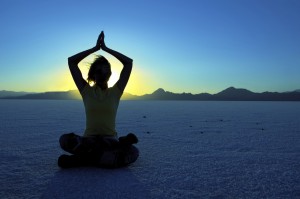
> Myths of Meditation! New light on Dhyana. <
By Yogi Baba Prem Tom Beal, Veda visharada, CYI, C.ay, C.va,
Upanishad
From Hindupedia, the Hindu Encyclopedia www.hindupedia.com
By P.R.Ramachander
The term > „Upanishad“ < literally means the inner or mystic teaching. It is derived from upa (near), ni (down) and s(h)ad (to sit), i.e., sitting down near, which refers to groups of pupils sitting near their teacher to learn from him the secret doctrine. In the serenity of forest hermitages, the Upanishad thinkers pondered on the problems of deepest concerns and communicated their knowledge to the capable pupils that sat near them.
Samkara derives the word Upanishad as a substitute from the root sad, ‚to loosen,‘ ‚to reach‘ or ‚to destroy‘ with Upa and ni as prefixes and kvip as termination. If this determination is accepted, Upanishad means brahma-knowledge by which ignorance is loosened or destroyed. The Upanishads are found in the concluding sections of the Vedas and are classified as Vedanta, or the end of the Vedas.
There are five Vedas and each of these five books has several Saaakas (Branches). Each Saaka has a Karma Khanda dealing with the actions to be performed and is made up of Mantras and Brahmanaas. The latter deals with Upasana or meditation and has Aranyakas * inside them for the benefit of those who have resorted to the quiet habitat of the forest to pursue their spiritual quest.
(*Literature in the ancient period was not fuelled by the urge to preserve history but was a complication of experiences and rules of worship. Most of the literature of this period was religious. (a) The Indigenous literature includes the Vedas, the Brahmanas, the Aryankas, the Upanishads, the Epics Ramayana and Mahabharatha, the Brahmashastras, the Puranas. The Buddhist and Jain literature gives knowledge of the traditions prevalent in those periods. The literature of this period are in Sanskrit Pali Prakrit. It gives us a knowledge about music, dance, painting architecture and administration of various kings.)
The Upanishads are found mostly in the Aranyaka section of the Vedas. The five Vedas have 1180 Saaakas and thus there should be 1180 Upanishads. Of these, what exists today is a collection of 108 Upanishads. The list of these 108 Upanishads is given in the Mukthikopanishad.
Out of the 108 Upanishads, only 10 have been commented upon by several Acharyas like > Adi Shankaracharya < . These are Ishavasya, Kena, Katha, Aithreya, Brihadaranyaka, Prashna, Mandukya, Taittireeya, Chandogya and Mundaka. These have also been popularized by many savants like Swami Vivekananda, Swami Chinmayananda etc. They all deal with highest category of philosophy and metaphysics. Because of this, there is a general impression that all Upanishads are texts of Hindu Philosophy. This is not true. There are Upanishads which even tell you how to wear the sacred ash, how to worship a particular God and so on. But the majority of them deal with methods of Yoga and Renunciation (Sanyasa).
Dhyana Bindhu Upanishad
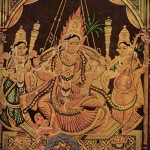
Om ! May He protect us both together; may He nourish us both together;
May we work conjointly with great energy,
May our study be vigorous and effective;
May we not mutually dispute (or may we not hate any).
Om ! Let there be Peace in me !
Let there be Peace in my environment !
Let there be Peace in the forces that act on me !
THE SACRED SYLLABLE „OM“ ACCORDING TO THE UPANISHADS (including dhyana bindu upanishad) , by TYS, Tradtional Yoga Studies, Georg Feuerstein, : > here < .
Aum (also Om, written in Devanagari as ॐ, in Chinese and Japanese as 唵, in Tibetan as ༀ, in Sanskrit known as praṇava प्रणव lit. „to sound out loudly“ or oṃkÄ�ra ओंकार lit. „oṃ syllable“) is a mystical or sacred syllable in the Indian religions, including Hinduism, Sikhism, Jainism and Buddhism, and in Bön.
Aum is commonly pronounced as a long or over-long nasalized close-mid back rounded vowel,) though there are other enunciations pronounced in received traditions. It is placed at the beginning of most Hindu texts as a sacred exclamation to be uttered at the beginning and end of a reading of the Vedas or previously to any prayer or mantra. The Mandukya Upanishad is entirely devoted to the explanation of the syllable. The syllable is taken to consist of three phonemes, a, u and m, variously symbolizing the Three Vedas or the Hindu Trimurti or three stages in life ( birth, life and death ). Though ostensibly in some traditions it is polysyllabic and vocalized as a triphthong, the Omkara is held to move through and contain all vowels possible in human speech.
The name Omkara, (Sanskrit: the syllable om) is taken as a name of God in the Hindu revivalist Arya Samaj. Similarly, the concept of om, called onkar in Punjabi, is found in Sikh theology as a symbol of God. It invariably emphasizes God’s singularity, expressed as Ek Onkar („One Omkara“ or „The Aum is One“), stating that the multiplicity of existence symbolized in the aum syllable is really founded in a singular God.
Read the full text: > HERE <
> Meet Adi Shankara Group at facebook <
RABINDRANATH TAGORE & AMARTYA SEN.
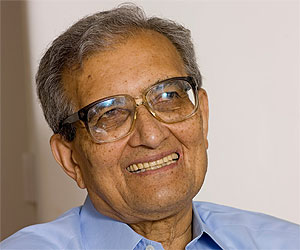
> AMARTYA SEN. & VISVA-BHARATI UNIVERSITY <
A central university and an institution of national importance
Rabindranath Tagore (Bengali: রবীন্দ্রনাথ ঠাকুর) (May 1861 – 7 August 1941), sobriquet Gurudev, was a Bengali polymath. As a poet, novelist, musician, and playwright, he reshaped Bengali literature and music in the late 19th and early 20th centuries. As author of Gitanjali and its „profoundly sensitive, fresh and beautiful verse“, he became Asia’s first Nobel laureate by winning the 1913 Nobel Prize in Literature.
A Pirali Brahmin from Calcutta, Tagore wrote poems at age eight. At age sixteen, he published his first substantial poetry under the pseudonym Bhanushingho („Sun Lion“) and wrote his first short stories and dramas in 1877. Tagore denounced the British Raj and supported the Indian Independence Movement. His efforts endure in his vast canon and in the institution he founded, Visva-Bharati University.
THE ARTS OF HARISH JOHARI
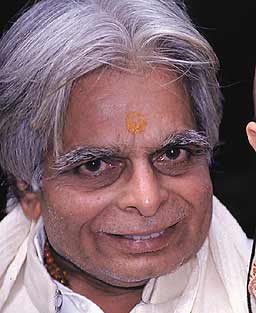
> HARISH´s AYURVEDA BOOKS & ARTS <
Harish Johari (1934-1999) was a distinguished North Indian author, Tantric scholar, poet,musician, composer, artist, and gemologist who held degrees in philosophy and literature and made it his life’s work to introduce the culture of his homeland to the West.
Breath, Mind, and Consciousness
YOGA, by the puplisher
Modern scientists are just now beginning to understand what yogis have known for centuries–that the life force animating our physical bodies is regulated by breath, and that the breath energy is controlled by the mind. The esoteric and practical science of Swar Yoga >–presented in this book for the first time in English–< teaches conscious observation and control of breathing patterns to maximize energy and vitality.
Tantric Scholar and author of Tools for Tantra, Chakras, and The Healing Power of Gemstones, HARISH JOHARI brings an in-depth knowledge of ancient Hindu sciences to this discussion of breath and the yoga of balanced living.
His is the first guidebook for Westerners to offer a comprehensive treatment of the subject, providing information from Sanskrit texts otherwise unavailable in the English Language. He explains the sensory network of the nose and its effect on the subtle channels of energy throughout the body, showing the direct link between the practice of conscious breathing and the electrochemical balance of the brain and nervous system. He also shows how the breath, alternating between left and right nostrils, is influenced by solar and lunar forces and how one can attune to these natural rhythms and universal laws for greater health and well-being.
SWARA YOGA, the ancient art of breathing
Johari’s mastery of > Swara Yoga < techniques is apparent in the broad scope of Breath, Mind and Consciousness: included are a discussion of the phases of the five elements in the breathing cycle, exercises for physical and psychic healing, the means for determining which nostril is active, and instructions for conceiving a son or a daughter.
While continuing his lifetime study and practice of tantra, HARISH JOHARI is a painter, sculptor, gemologist, and composer of Indian music.
The word SWARA in Sanskrit, means sound or musical note; it also means the continuous flow of air through one nostril. And we all know that YOGA means union. So Swara Yoga is the science which is about the realization of cosmic consciousness, through the awareness or observation, then control or manipulation of the flow of breath in the nostrils.
Swara yoga is an ancient tantric science which involves the systematic study of the breath flow through the nostrils (or swara) in relation to the prevailing phases of the moon, time of day and direction . Although we think of ‚pranayama‘ when we think of techniques associated with the breath, in Swara yoga, it is the association of the breath in relation to the activities or phases or positions of the sun, moon, planets, seasons, time of day, with the physical and mental conditions of the individual and then taking the appropriate action according to these subtle relations. For example, knowing the moon phases and checking the flow of your nostrils before you get out of bed in the morning and letting the corresponding foot be the first to touch the floor and make the first step, is a simple practice that ensures success in everything that happens for that day. The first foot to touch the ground will get the prevailing ’successful‘ flow of energy from the cosmos.
> Meet SWARA Group at facebook <
> Meet over 200 Frida Kahlo Groups and Frida Kahlo Fans (184.298) <
YOGA TANTRA IN BUDDHIST SYSTEMS
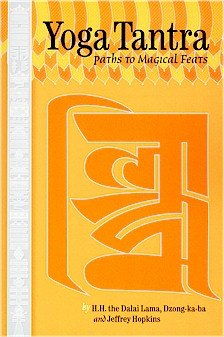
> Buddhaguhya< > Tantric Buddhism <
> INTRODUCTION TO THE BUDDHIST TANTRIC SYSTEMS <
–from Yoga Tantra: Paths to Magical Feats by H.H. the Dalai Lama, Dzong-ka-ba and Jeffrey Hopkins, translated and edited by Jeffrey Hopkins, published by Snow Lion Publications
Buddhaguhya’s Introduction to the Meaning of the Tantra and its commentary by the master Padmavajra describe how to achieve many different types of feats in considerable detail. These include achieving clairvoyance, love, compassion, the altruistic intention to become enlightened, and so forth. In Yoga Tantra there is also the achievement of an actual body that is a special type of form having the marks of a Buddha’s body; this seems to be like the mental body achieved through the path of the Perfection Vehicle. The process is to generate yourself as the deity and then imagine that all of space is filled with similar small Buddha bodies, which are brightened with the exhalation of breath and drawn into your heart with the inhalation of breath, like butter melting into sand.
By contemplating this again and again, capacity is gradually achieved, whereby eventually your body turns into a Bodhisattva Knowledge-Mantra Bearer who has a similitude of the form of a Buddha.
Paths to Magical Feats
by H.H. the Dalai Lama,
Dzong-ka-ba and Jeffrey Hopkins,
translated and edited by Jeffrey Hopkins
Contact Us:
Snow Lion Publications
N. America: (800) 950-0313
Worldwide: (607) 273-8519
By Mail: PO Box 6483,
Ithaca, NY 14851 USA
By Email: tibet@snowlionpub.com
On the Web: www.snowlionpub.com
ABOUT SOUND AND FORM
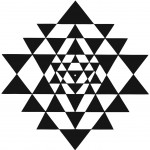
> YOGA UND MEDITATION IM ZENTRUM <
> SWAMI JANAKANANDA´s PROGRAMM<
Klang und Form:
In der Yogatradition gibt es bestimmte Mantra (Klänge zur Meditation) und Yantra (Formen um darauf zu meditieren), die zusammen gehören. Man sagt, daß die Form von Sri Yantra zum Mantra OM gehört, und umgekehrt.
Lassen sich diese Zusammenhänge zwischen Klang und Form beweisen? Ist das etwas, das man nur im Geiste erlebt oder läßt es sich messen?
Der Schweizer > Dr. Hans Jenny < verbrachte sein Leben mit der Untersuchung von den Zusammenhängen zwischen Klang und Form > (siehe Vibrationen schaffen Formen) . <
Er war einer der führenden Forscher der Welt auf diesem Gebiet und der Begründer der Kymatikwissenschaft. An seinem Forschungsinstitut für Wellenphänomene in der Schweiz konstruierte er um das Jahr 1970 ein sogenanntes Tonoskop, einen Apparat, mit dem sich Klang in Form umsetzen läßt. Dr. Jenny hat verschiedene Bücher über Kymatik geschrieben und fotografiert/gefilmt, wie Klänge verschiedene Materiale beeinflußen.
Nach unseren Quellen, ließ man eine Person, die > „ OM „< korrekt aussprechen konnte, das Mantra in das Mikrofon des Tonoskops singen. Zunächst bildeten sich Kreise auf der Platte, dann entstanden verschiedene Dreiecke mitten im Kreis, und als „M“ ausklang waren die Konturen von Sri Yantra zu sehen.
> CYMATICS, Nada Brahma, the World is Sound <
> CYMATICA Architectural Thesis Investigation <
About Sound and Form:
In the Yoga Tradition there are certain mantras (sound syllables) and yantras (forms to meditate on) which belong together. The form which belongs to the mantra Om is said to be Sri Yantra, and vice versa.
Is this relationship between form and sound a purely subjective experience – one that certain people claim to have seen within? Or can it be measured?
Dr. Hans Jenny spent his life investigating the connection between > sounds and forms < . He was one of the world’s foremost researchers in the field and the founder of the science of Cymatics. In his Wave Phenomena Research Institute in Switzerland, around 1970, he constructed what is called a tonoscope – an apparatus which converts sounds into forms. He wrote several books on Cymatics and documented through films and photos the influence of sounds on various materials.
According to our sources, a person who could pronounce the mantra „Om“ correctly, was asked to sing it into the tonoscope’s microphone. At first a circle was generated on the membrane of the tonoscope, then various triangles formed themselves inside the circle, and when the „m“ faded out, > Sri Yantra < was completed. Another mantra created concentric circles.
BINDU Textbeiträge von Yoga und Meditation im Zentrum,
Skandinavische Yoga und Meditationsschule
in Hannover und im Harbergen Yoga Retreat
www.yogaimzentrum.de
YANTRAS – VEDIC SACRED GEOMETRY
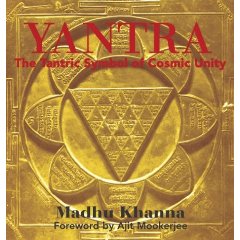
> YANTRA – the Tantric Symbol of Cosmic Unity <
> YANTRA & YOGA < > WATER FOR LIFE <
> International Water for Life Foundation <
Educating and raising the awareness of the power of water.
„Yantras are beautiful art, the original Vedic sacred geometry. These cosmic diagrams generate nourishing, life-supporting energies. Yantras embody the energy of particular sacred archetypal energies, such as deities and planets or grahas of > Vedic astrology (Jyotish) < . Yantras are especially useful in buildings that were not Vastu-designed. They protect from negative, disruptive energies in the environment. The directions, elements, and planets exert powerful vibratory effects on our bodies, minds, and emotions. Yantras help us have the support of nature rather than resistance from nature. There are mantras, or sacred sound vibrations, associated with most yantras. There are both two- and three-dimensional yantras. I have been studying them for years and offer yantras and a 25-page yantra guidebook on my website.“
Sherri Silverman, „Ph.D., author, > Vastu < : Transcendental Home Design in Harmony with Nature“
This book details all kinds of historical Yantras as revealed in various Vedas (historic Hindu scriptures). Yantras are cosmic machines which directs energies to the human body/mind to attain various psychic states. The author dwells deeply in to the philosophy behind it, which in essence is Hinduism. Understanding the Hindu concept of the world, the cosmos and the human being is the key to unlocking the power of Yantra. A reader who is not exposed to Eastern religious philosophies will find it difficult to comprehend the description of concepts behind the Yantra.
This book has many illustrations of historic Yantras and details of the significance of its geometric drawings. I liked this book for the depth of analysis and the description of underlying concepts. Please note that this is NOT an instruction work book on Yantras which details about how to make a Yantra.
One disappointing fact is that the author uses little space to describe Occult Yantras which are commonly used by ordinary people for protection, healing and power. The Sri Yantra, which enables a person to attain higher states is described in detail. Overall this book gave me indepth knowledge about the working of a Yantra – the energized cosmic machine.
P U R A N A S
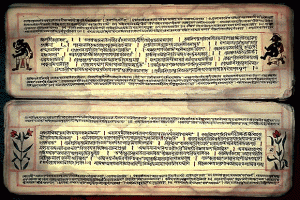
> Hinduism: A Holistic Way of Life <
The Hindu Vedas & Puranas elucidate on not only theology and mytho
Yoga is a way of life, an art of righteous living or an integrated system for the benefit of the body, mind and inner spirit. This art originated, was perfected and practiced in India thousands of years ago.
The references to yoga are available in > ‚Upanishads‘ < and > ‚Puranas‘ < composed by Indian Aryans in the later Vedic and post- Vedic period.
The main credit for systematizing yoga goes to Patanjali who wrote ‚Yoga Sutra‘, two thousand Years ago.
He described the principles of the full eight fold yogic discipline. He composed the treatise in brief code words known as ‚Sutras‘.
Yoga is a way of life, an art of righteous living or an integrated system for the benefit of the body, mind and inner spirit. This art originated, was perfected and practiced in India thousands of years ago. The references to yoga are available in ‚Upanishads‘ and ‚Puranas‘ composed by Indian Aryans in the later Vedic and post- Vedic period.
The main credit for systematizing yoga goes to Patanjali who wrote ‚Yoga Sutra‘, two thousand Years ago. He described the principles of the full eight fold yogic discipline. He composed the treatise in brief code words known as ‚Sutras‘. > ‚Yoga Sutra‘ < is the most important basic text on Yoga. It is through this basic treatise that the essential message of yoga spread throughout the world.
Aim of Yoga is the attainment of the physical, mental and spiritual health. Patanjali has recommended eight stages of Yoga discipline. They are:
-
Yamas- Yamas (abstentions or restrains)
-
Niyamas- Niyamas (observances)-austerities, purity, contentment, study, surrender of the ego
-
Asanas- Physical postures or exercises
-
Pranayama- Control of vital energy (Breathing control)
-
Partyahara- Withdrawal of the senses
-
Dharana- Concentration of the mind (Contemplation)
-
Dhyana- Meditation
-
Samadhi- Attainment of The super conscious state
Quelle Astrojyothi: > The Puranas < are the richest collection of mythology in the world. Most of them attained their final form around 500 A.D. but they were passed on as an oral tradition since the time of Krishna (c. 1500 B.C.).
There are eighteen major Puranas and a few minor ones. Each is a long book consisting of various stories of the Gods and Goddesses, hymns, an outline of ancient history, cosmology, rules of life, rituals, instructions on spiritual knowledge. Hence the Puranas are like encyclopedias of religion and culture and contain material of different levels and degrees of difficulty.
The most important Puranas are the VISHNU PURANA, SHIVA PURANA and MARKENDEYA PURANA (to the Goddess). The BHAGAVATA PURANA is important to the worshippers of Krishna. Other Puranas are the Vayu, Agni, Skanda, Kalki, Linga.
„The Vedas and Puranas are one and the same in purpose. They ascertain the Absolute Truth, which is greater than everything else. The Absolute Truth is ultimately realized as the Absolute Personality of Godhead with absolute controlling power. As such, the Absolute Personality of Godhead must be completely full of opulence, strength, fame, beauty, knowledge and renunciation.“
The Puranas are perhaps the most important or commonly used scriptural texts of the Hindus. They were guide books for the whole of life and society.
- Dein Ayurveda Net: ….. > “ Patanjali „ <
- Dein Ayurveda Net: ….. > “ Ashtanga “ <
- Dein Ayurveda Net: ….. > “ Purana “ <
- Dein Ayurveda Net: ….. > “ Agama“ <
- > Meet Patanjali Groups at facebook <
- > Meet Upanishad Groups and Study at facebook <
Tibetan Medicine, Spirituality, Compassion
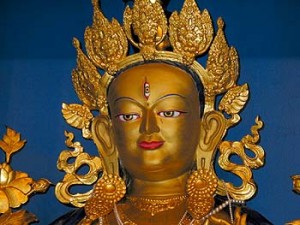
> CONGRESS – 10th anniversary of the New Yuthok Institute <
October 31 2009 (9h – 18h)
„Spirituality & compassion as cure of the body and mind“
Das > New Yuthok Institut < feiert dieses Jahr sein 10-jähriges Jubiläum. Aus diesem Anlass wird am 31. Oktober 09 ein Kongress in Mailand organisiert. Über ihre Erfahrungen mit Tibetischer Medizin im Westen berichten:
- Tibetische Medizin und Homöopathie, Dr. Victorine Cumero
- Beziehung zwischen Buddhismus und Tibetischer Medizin, Prof. Pasang Yonten Arya Tendi Sherpa
- Tibetische und Westliche Medizin, Dr. Med Walburg Maric’ Oehler
- Produkte der Tibetischen Medizin, Dr. Herbert Schwabl
- Tibetische Medizin und Onkologie, Dr. Alfredo Celano
- Mitgefühl und Tibetische Medizin als psychologische Therapie, Prof. Gioacchino Pagliaro
- Tibetische Medizin und alltägliche Probleme aus der Praxis, Dr. Simonetta Nicolai
- Präsentation ausgewählter Fälle, Dr. Tenzin Thupten
The New Yuthok Institute is an Association founded by Prof. Yonten Arya (T. Sherpa) with several medical doctors and psychologists to preserve and spread the age-old teachings of Tibetan Medicine.
This particular medical system is distinguished from all other Eastern Medicines because of its strong spiritual and psychological matrix linked to the connection initially created with Bon shamanism and, later and especially, because of its strong link to Tibetan Buddhism.
It is a well-known fact that Buddhism is at the center of Tibetan Medicine which began with the teachings of Buddha Shakyamuni, himself, and it is just this close and essential relationship with Buddhism which sets the Tibetan system apart from all others.
Tibetan Medicine, in addition to its high ethical values, gives us a detailed description of the mind, the mental states and how they function. Today, much of this large body of information has been scientifically validated by neuroscience. The Tibetan view takes not only the individual and biological aspects of the mind into account but also its energetic and spiritual dimension. It is this dimension which dictates how we view all things and how they take shape in our minds.
It is especially, though not only, for this reason that Tibetan Medicine has awakened great interest among the community of psychologists, psychiatrists and mental health workers.
Tibetan Medicine is also unique because it doesn’t isolate itself from medical-scientific views and, in fact, embraces and complements them to offer an extraordinary contribution not only because of the therapeutic results it achieves but also because of its ability to integrate with scientific medicine and with other complementary medicines.
Tibetan Medicine, today, provides the West with an extraordinary opportunity because TM can act as a bridge to unite the various scientific, medical and psychological disciplines and can provide a path to achieve the ‘humanization’ of medical care.
With this Congress, the New Yuthok Institute celebrates its tenth anniversary by presenting aspects of the important training it has provided to many psychologists, medical doctors, nurses, physiotherapists, naturopaths and health workers in general and the results it has achieved in the context of clinical applications.
> Geschichte der Tibetischen Medizin <
und die Modernen Aspekte der Tibetischen Medizin
Die Tibetische Medizin hat ihre Hauptwurzeln im Lande selbst und in der uralten Erfahrung und Geschicklichkeit des tibetischen Volkes, das seit jeher in enger Verbindung zur Natur gelebt hat und zu seinem Überleben in großer Höhe stets auf eigene Ressourcen angewiesen war. Im Laufe der letzten zweitausend Jahre hat aber auch die medizinische Weisheit anderer Länder und Zivilisationen Eingang in das einheimische System gefunden – entweder wurden neue Einsichten direkt und beabsichtigt übernommen oder durch natürliche gegenseitige Befruchtung der Kulturen über Jahrhunderte hinweg allmählich assimiliert. Nachfolgend einige wichtige Stationen
Seit Jahrtausenden entwickelt sich in Tibet eine medizinische Überlieferung, die als Bön-Tradition bekannt ist.
> TIBETAN TANTRIC YOGA AND LUEJONG <
Two day seminar
rLung, mind and physical Yoga (luejong)
Concepts and practice, level II
Prof. Pasang Y. Arya
November 07-08 2009
The Tibetan tantric yoga is a practice that has been done by Indian and Tibetan yogis for centuries, and is not like yoga usually practiced in the West. It is a practice of rLung (psychic wind) and exercise of the mind purely based on spiritual development, which was laid down by the tantric tradition of master Pundit Naropa and later masters. The exercice removes the negative energies from the channels and chakras by physical positions and movements which harmonize wind and mind and release inner stress and tension. Dedicated and genuine pratitioners may tame the wind, develop spiritual experience, and become able to control the mind and emotion. The life-long exercice with proper motivation and correct view can lead to the pure state of awakened Buddhahood. Generally the yoga technique basically helps stimulate the channels and chakras, and purifies the body/mind and promote the health.
Our main site will help you find the Palyul center closest to you and will introduce you to our teachers, their teachings, and teaching schedules.
Our mission is to uphold and preserve the teachings of the Buddha through study, practice and activity. Our goal is to make the teachings, particularly in the Palyul Nyingma tradition of Tibetan Buddhism, available to all.
> Yoga <
Our centers offer a complete course of study, prayer, and meditation practice for those who wish to follow the path to freedom. Our retreat centers offer places to focus on practice. Click for a guide to Palyul center locations around the world or select a center website from the menu at left.
> Meet Tibetan Medicine at facebook <
> Meet IASBS Communication Board Buddhist Studies at facebook <
> Meet Palyul Dhonyag Shedrub Ling at facebook <
A G A M A
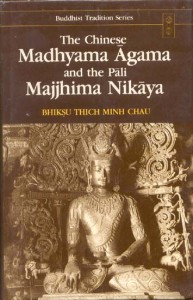
> The Chinese Madhyama Agama & the Pali Majjhima Nikaya <
> AGAMA IN BUDDHISM, JAINISM, HINDUISM <
A G A M A
By Jayaram V
The word „agama“ means authoritative scripture. It was used by > Panini < , the Sanskrit grammarian, as a linguistic term, to describe the formation of certain words. Tantric and Saiva tradition recognizes the agamas as the most authoritative and sacred texts on the methods of worshipping Saguna Iswara or the Brahman with qualities. In a limited sense the agamas are tantric texts containing the principles and practice of Saivism, presented in the form of a teaching by Lord Siva to His consort Parvathi. in contrast, the nigamas, another branch of sacred litetature, depict Parvathi as the teacher and Siva as its recipient. According to the Tantric tradition, the Vedas are nigamas.
Scholars believe that the earliest Agamas were composed during the later Vedic period, when the Vedic rituals were on the decline and Saivism, Vaishnavism and other religious sects were gaining ground. Not all agree with this contention. Some believe the earliest agamas to be much older than the Vedas. There is also an argument that some of the Upanishads and even some portions of the Bhagavadgita were renditions of preexisting agamas. Followers of Siva consider these texts superior to the Vedas. Unlike the Vedas, the Agamas are meant for all castes and sections of society, including women. While the many agamas belong to Saivism and recognize Siva as the Supreme deity, there are also Vaishnava and Shakti agamas which recognize Vishnu and Shakti respectively as the Supreme Iswara.
There is no unanimity as to the actual number of the agamas. Based upon who is recognized as the principal deity, the agamas are divided into Saiva, Vaishnava and Shakti or Tantra agamas. The Pancaratra Agamas and the Vaikanasa Agama belong to the Vaishnava tradition. The Saiva agamas, which contritubuted to the popularity of the southern school of Saiva Siddhanta philosophy and northern school of the Pratyabhijna system of Kashmir Saivism, are divided two distinct categories, namely the 28 Saiva Siddhanta Agamas and 64 Agamas belonging to both the Nakulisa Pasupatha and the Kashmiri Trika schools of Saivism. The > Kaula < , > Mishra < and> Samaya agamas < (and siddhanta texts) are considered to be part of the Shakti tradition. The Vaishnava agama is further divided into Pancharatra and Vaikanasa Agama. The smartas, who acknowledge the Vedas as the supreme and follow the Vedic tradtion, recognize the Agamas, but don’t necessarily adhere to them. In the Malay languages the word Agama literally means religion. The Agamas are also sometimes known as Tantras.
Buchtipp: Bettina Bäumer, Trika: > Grundthemen des kaschmirischen Sivaismus <
There is no unanimity as to what constitue the 28 Agamas of the Saiva Siddhanta schools. According to one classification, of the 28 agamas, ten represent the school of Advaita (monism) or Sivabheda and the rest the school of Vishishtadvaita (qualified monism)or Rudrabheda. The 28 Agamas are listed below:
LAMA JIGMES FREE TIPS
Lama Jigme a refreshing encounter Episode Lama Jigme Gyatso is an ordained monk in an age when many are content to hide behind tradition, hearsay, dogma and circular reasoning it can be refreshing to encounter someone like him. Taking his teachers instructions to heart, he practices and transmits the Buddhas teachings in an essentialized and pragmatic manner that is as profoundly effective as it is deeply practical.
Who is Lama Jigme ?
Ordained as Lama Jigme Gyatso: Rime Manipa Tantrika, which translates as “Ocean of Courage Teacher; ” he is a Jewish-american born, Tibetan-buddhist: Monk, Teacher, Healer and Tantrika.
Lama Jigme was taught to be devoted to the Buddha of Compassion {Manipa} in a NON-sectarian manner {Rime} that practices Sutra’s union of compassion and insight as well as the union of Tantra’s paths of devotion, imagination and sensuality {Tantrika}.
In an age when many are content to hide behind tradition, hearsay, dogma and circular reasoning this controversial and unconventional teacher insists that a true Lama’s resume, credentials and letters of recommendation are the vastness of his Compassion, the profundity of his Insight and the power of his Effectiveness.
Lama Jigme Gyatso has had the very good fortune to receive teachings from every major Buddhist lineage of the Theravada, Mahayana and Tantric traditions.
Taking his Lama’s instructions to heart, he practices and transmits the Buddha’s teachings in an essentialized manner that is as profoundly effective as it is deeply practical.Interessen:Lama Jigme is playful and dynamicas well as loving and insightful.
Just as the alchemists of legend turned lead into gold, instructions received from this precious teacher can transform sorrow, anger, and fear into peace, love, joy and bliss.
Vayu Rahasya: The Secret of Vayu
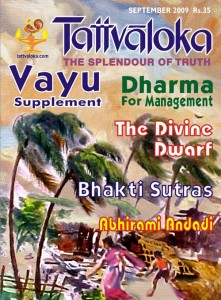
Vayu Rahasya: The Secret of Vayu
Written by Dr. David Frawley,Sept. 2009
The magazine of > Sringeri Shankaracharya Math < , the oldest and most respected of the Shankara monastic centers in India, representing the great tradition of Advaita Vedanta. Dr. Frawley has written many articles for the magazine over the years and been closely connected to the Math.
Vayu, the Cosmic Power
Vayu is one of the key concepts of Vedic thought that has great importance in Yoga, Ayurveda and Vedanta. It has many profound implications both at a cosmic level and relative to our own individual lives. Indeed if one understands Vayu, one understands everything, including time, space and karma, life and death and one’s own deeper Self.
Vayu is usually regarded as the element of air at a material level. This is a good place to begin a study of Vayu, but only the beginning of many correspondences. In Vedic thought, Vayu includes the concept of space or Akasha. Space in motion is air, while air at rest is ether. These are the two sides of Vayu, which is the unity of air and ether. Ether is the field in which Vayu as a force operates.
Modern science recognizes that the universe consists of a fabric of space filled with various types of channels, currents or wormholes that are filled with dynamic interchanges. This is a picture of the cosmic Vayu, which is not only space but the energy within it both potential and actual. One could say that potential energy is space while activated space is air. The universe itself is Vayu in its ethereal vibration.
However, Vayu is much more than the material or even subtle elements. Vayu is the power through which everything comes into manifestation and into which everything eventually returns. Vayu is not just the material element of air and space but the cosmic principle of energy and space that pervades body, life, mind and consciousness. The entire manifest universe arises from space and energy which is Vayu at an outer level. At an inner level, Vayu stands for the formless principle of air and space, the invisible Spirit or Brahman behind the visible world of the earth, water and fire elements, the realm of name and form. The famous Shantipath of the Taittiriya Upanishad declares this:
Namaste Vayo, tvam eva pratyaksham Brahmasi.
`O, Vayu, you are the directly perceivable Brahman.‘
Vayu often symbolizes the supreme deity, the spirit that is formless in nature yet full of power like the wind or air. Vayu as the creative or causal power is the power of Ishvara or the Cosmic Lord. Yet Vayu as the receptacle of all power and the ground of all existence can symbolize the Supreme Brahman as well. Vayu can indicate both Saguna and Nirguna Brahman. Vayu thus often means Spirit, not just the air as an element but the presence of being and consciousness that exists everywhere but cannot be seen anywhere. We find this idea of Spirit or air in many spiritual traditions throughout the world, and in the very term `spiritual‘.